
Alastair Macphie’s food manufacturing plant in rural Aberdeenshire is striving for corporate sustainability.
The family-owned business, which produces ingredients including cookie dough for Ben & Jerry’s ice cream, is planning to build a solar farm to complement its wind turbines as it investigates using green hydrogen boilers to reach carbon neutrality by 2030.
But a proposed route for overhead pylons near the business, where 240 people are employed, now threatens the company’s long-term expansion.
His story is one of many in the local narrative of opposition to the network expansion of overhead lines in northern Scotland that the UK government says is integral to its broader ambition to deliver 55GW of offshore wind power by 2030.
SSEN, the transmission arm of energy giant SSE, has been holding consultations in village halls across northern Scotland as the company embarks on a major network upgrade underpinning the UK’s pathway to net zero.
“If SSE put the pylons where ‘they’ want to, it will impact many future plans, just after we have spent £10mn modernising the site,” he said.
Macphie said the proposed route would place up to eight pylons on his company’s land, destroying the water supply and also disrupting a peregrine falcon nest. “But they aren’t interested in that,” he added.
The Highlands have become a battleground in the net zero race given northern Scotland’s large number of wind farms. The groundswell of rural opposition to overhead power lines threatens to derail the UK administration’s commitment to decarbonise the electricity grid by 2030.
The activists, fearing a blighted landscape and plummeting house prices, argue passionately for underground or subsea cables to transmit Scotland’s surfeit of renewable power down to areas of higher demand in England.
For SSE and the UK government, new renewables projects and the related electricity infrastructure are vital elements in the rewiring of the UK’s energy mix away from fossil fuels.
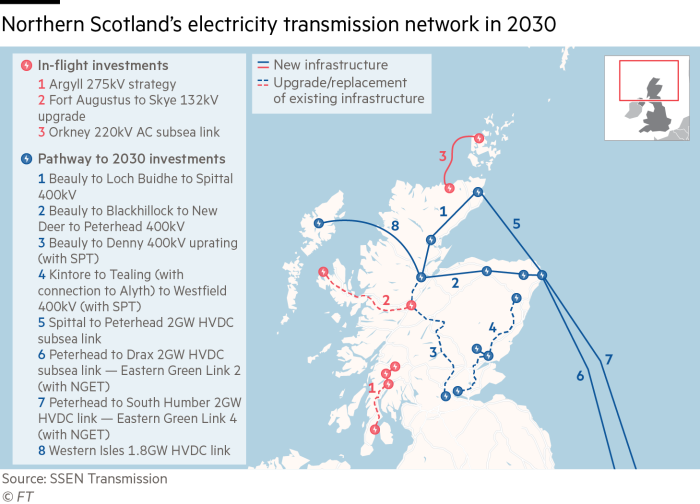
Sir Keir Starmer, prime minister, has said burying cables underground is too expensive, arguing that overhead pylons were a necessary trade-off for clean power. Energy secretary Ed Miliband has vowed to protect green infrastructure from “obstructionists” as a matter of national security.
One of the lines, the Kintore-Tealing 400kV connection, will have pylons that are 57 metres high on average and extend 105km from north-west of Aberdeen through fertile potato fields and the special landscape area of the Braes of the Mearns to the north of Dundee.
“We are working to oppose the proposals,” said Tracey Smith, co-founder of the “Save Our Mearns” campaign. “We all agree that any infrastructure should be the right technology in the right place — but massive pylons are not right in any way and neither is industrialising the north-east of Scotland.”
Some campaigners believe that legal challenges and complaints to council planners can delay the rollout, disrupting the project’s financing timelines and forcing the government to explore alternative routes to handle the growing demand for electricity.
SSEN Transmission said it was committed to “meaningful consultation” that had already resulted in alternative overhead line routes as it balances “community feedback alongside technical and environmental constraints”.
Eight new and upgraded overhead lines and subsea cables would play a “major role” in meeting climate goals and renewable targets, it said.
Geographical constraints limit the use of offshore solutions and overhead lines can carry about three times more power than subsea cables, SSEN added, wary of the higher “cost to energy bill payers”.
But many people are mobilising against the large number of green projects taking root in the Highlands.
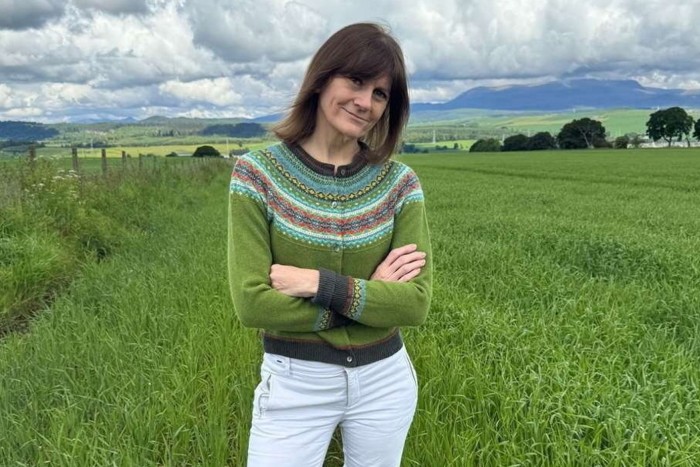
Helen Crawford, a Conservative councillor, last month pushed through a motion for more public involvement in consenting, calling on the Highland Council to publish an online map to present a holistic view of renewables applications including pylons that arrive “every day”.
Backed by 62 community councils, the motion seeks to prevent “salami-slicing”, through which developers submit piecemeal applications so renewables projects are considered separately to related transmission infrastructure.
“If we don’t know what’s coming down the road, it hampers public consultation,” she said.
To speed up the consultation process, the UK and Scottish governments are in talks about planning reforms to streamline oversight as both administrations strive to meet ambitious climate targets.
Rather than expensive and lengthy local public inquiries into examining objections, Scottish government planning officials would gather submissions to decide which areas require further investigation.
“This stuff is important — we need to get the infrastructure in place for net zero,” said Ivan McKee, Scotland’s minister for public finance.
Executives said introducing time-limited consenting periods, rather than the open ended system in use today, would keep Scotland competitive in the global race for investment.
Nick Winser, the UK’s electricity network commissioner, in a 2023 report on accelerating transmission infrastructure recommended aligning the consenting system in Scotland under the 1989 Electricity Act with the Planning Act of 2008 used south of the border.
He also advised removing the trigger for public inquiries from planning authorities and giving it to Scottish ministers.
Amending the Electricity Act of 1989 should be “a matter of urgency”, he wrote at the time as it was “required to support 2030 projects required to meet energy targets”.
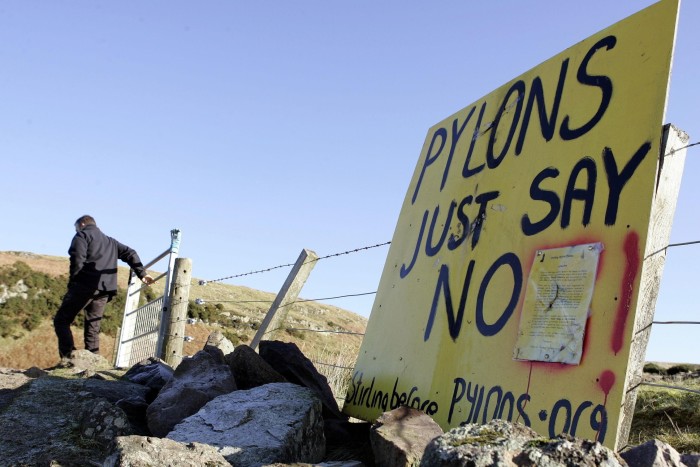
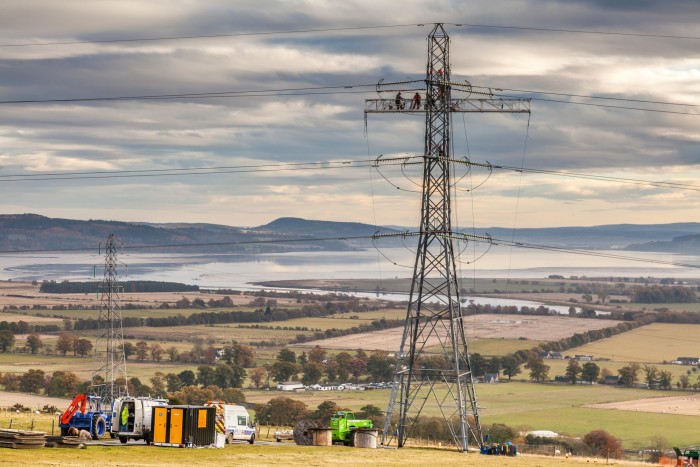
The Beauly-Denny line, an earlier grid expansion project, triggered Scotland’s lengthiest public inquiry, ending around a decade ago.
The industry expects a consultation process regarding consenting reform this autumn, according to Scottish Renewables.
Stephen McKellar, head of grid and networks policy at the industry body, said the aim was to expedite the process to make it “slicker”. There are also plans for a nationwide campaign to explain the benefits of such infrastructure next year, he said.
“We also need to recognise that community involvement and engagement is needed as early as possible,” he added. Opposition to pylons has surfaced across rural areas in the UK facing disruption from new high-voltage lines.
Many residents, however, say consultation has come too late.
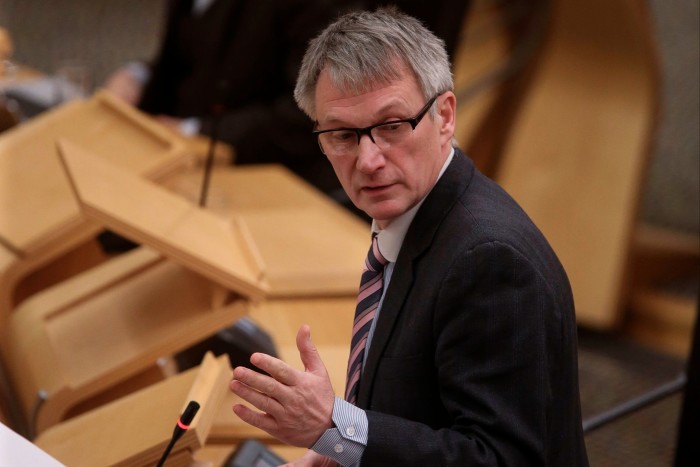
At the latest consultation events, SSE has employed security guards after previous occasions of “threatening and aggressive behaviour”.
The prevailing mood in Drumlithie, however, was a mixture of despair, resignation and a determination to delay the route.
When Zoe Archer sees the map of the indicative pylons route adjacent to her home of more than two decades, she bursts into tears. “I am so scared,” she said.
Staff showed Archer a computer visualisation of the pylons, which under the current plan would pass 300 metres behind her house.
“It’s horrendous,” said Archer, a local horse owner, questioning whether her property could now be marketed. “We can’t afford to move.”